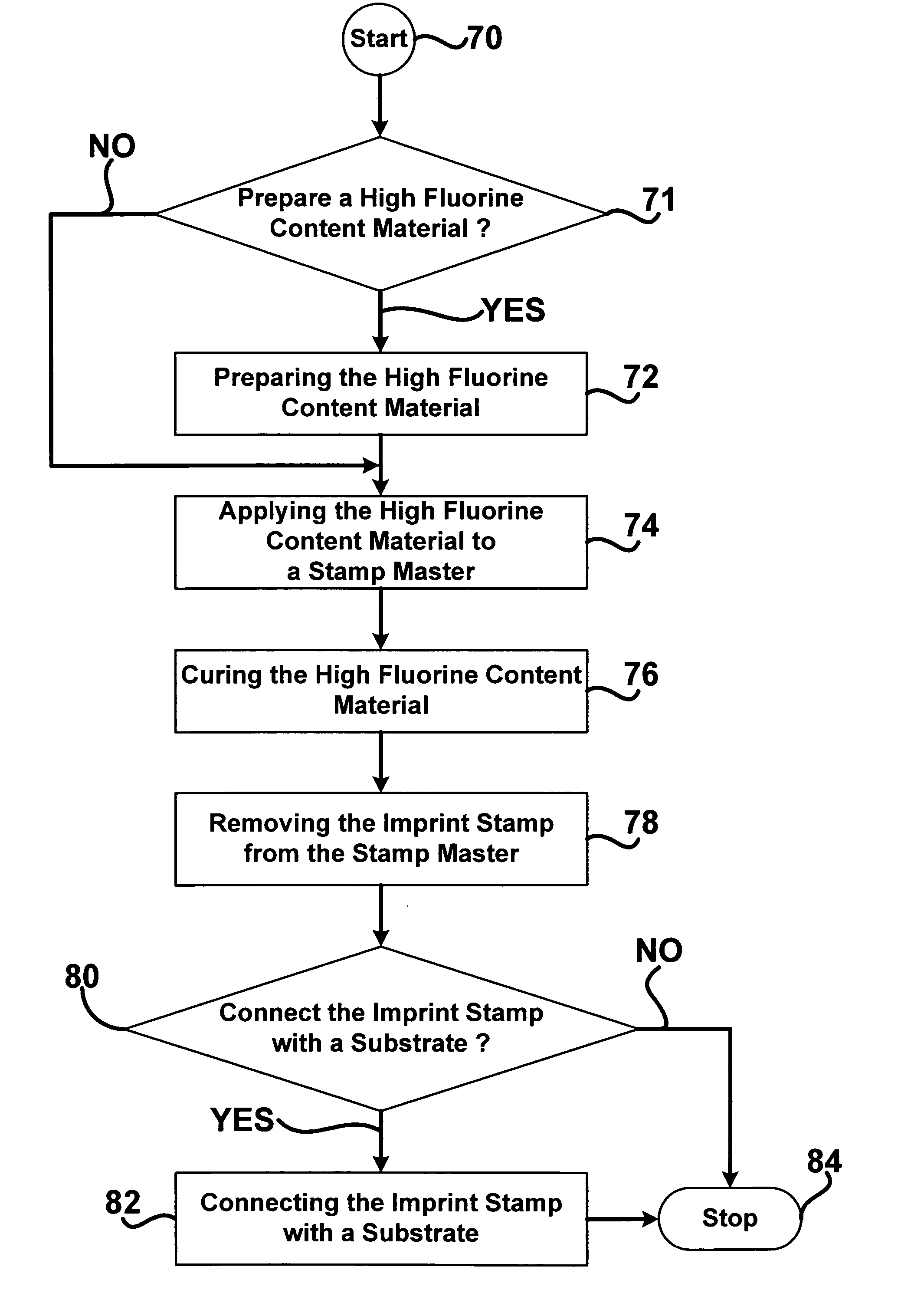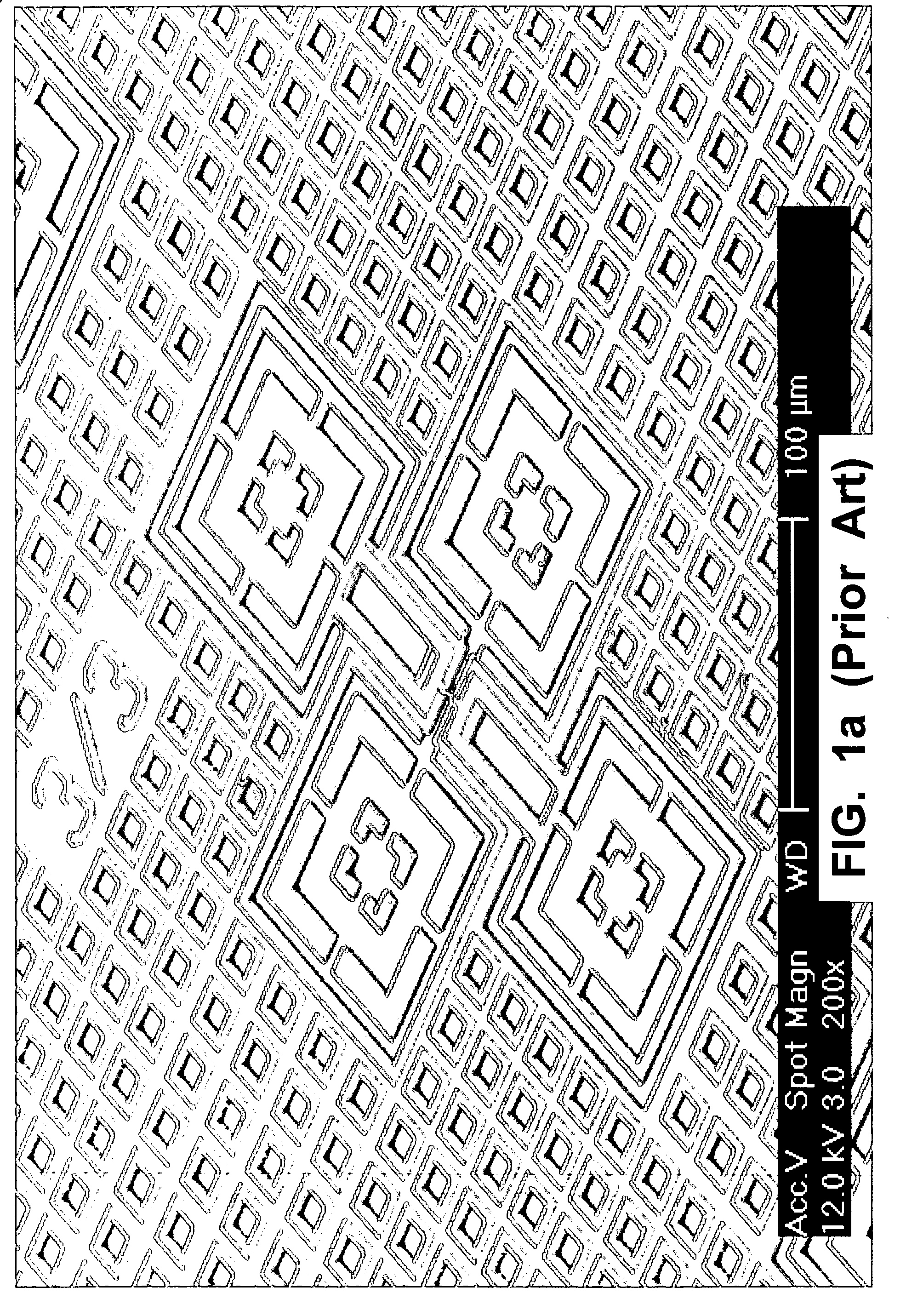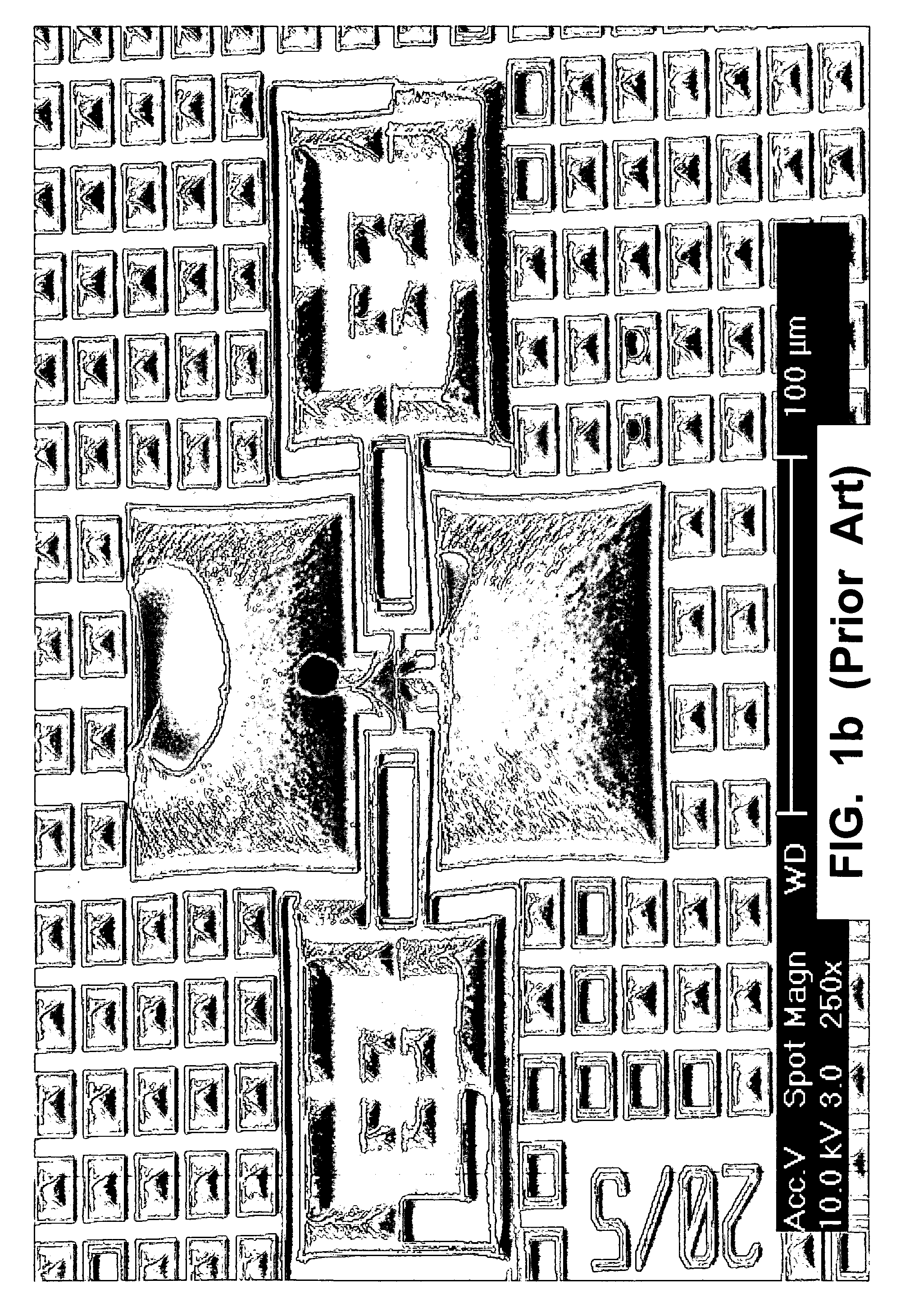Imprint stamp
a technology of imprint stamps and elastomers, applied in the field of imprint stamps, can solve the problems of difficult handling of pdms, inability to stabilize pdms, and difficult mold release, and achieve the effects of flexibility and non-tackiness, high fidelity, and convenient mold releas
- Summary
- Abstract
- Description
- Claims
- Application Information
AI Technical Summary
Benefits of technology
Problems solved by technology
Method used
Image
Examples
Embodiment Construction
[0034] in the following detailed description and in the several figures of the drawings, like elements are identified with like reference numerals.
[0035] As shown in the drawings for purpose of illustration, the present invention is embodied in an imprint stamp made from a high fluorine content material and a method of fabricating an imprint stamp from a high fluorine content material. Both the imprint stamp and the imprint pattern are made from the high fluorine content material. An imprint pattern of high fidelity can be formed in the high fluorine content material of the imprint stamp because the high fluorine content material resists blending, pairing, and swelling that can result in entrainment of contaminants and a loss of imprint pattern accuracy. The imprint stamp can be used in a manufacturing process (e.g. a soft lithography process) to emboss a media several hundred or more times without damage or wear to the imprint pattern. Consequently, a high fidelity and substantial...
PUM
 Login to View More
Login to View More Abstract
Description
Claims
Application Information
 Login to View More
Login to View More - R&D
- Intellectual Property
- Life Sciences
- Materials
- Tech Scout
- Unparalleled Data Quality
- Higher Quality Content
- 60% Fewer Hallucinations
Browse by: Latest US Patents, China's latest patents, Technical Efficacy Thesaurus, Application Domain, Technology Topic, Popular Technical Reports.
© 2025 PatSnap. All rights reserved.Legal|Privacy policy|Modern Slavery Act Transparency Statement|Sitemap|About US| Contact US: help@patsnap.com



